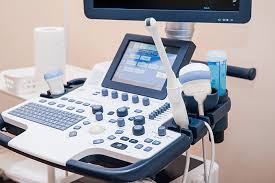Your cart is currently empty!

How to Properly Maintain Medical Equipment to Prolong Lifespan
By Dr. David Atuhe
Medical equipment plays a critical role in healthcare delivery, from diagnostic tools like MRI machines to therapeutic devices such as ventilators. Proper maintenance is essential to ensure their accuracy, reliability, and longevity. Effective maintenance not only enhances patient safety but also reduces operational costs associated with frequent repairs or replacements. Below are some key strategies for maintaining medical equipment, supplemented by real-world examples.
1. Adhere to Manufacturer Guidelines
Every medical device comes with a user manual that outlines specific maintenance instructions. These guidelines include cleaning protocols, calibration schedules, and storage conditions tailored to the device. Ignoring these can lead to malfunction or premature wear.
A good example is that ultrasound machines often require regular probe cleaning with recommended solutions to prevent residue buildup that could compromise image quality. Facilities that strictly follow these protocols experience fewer breakdowns and clearer diagnostics.
2. Implement Preventive Maintenance Programs
Preventive maintenance involves routine checks and servicing to detect and address potential issues before they escalate. Hospitals should establish a maintenance schedule that includes tasks such as calibration, lubrication, and replacement of worn-out parts.
A hospital in Nairobi reduced downtime for its dialysis machines by implementing a preventive maintenance schedule that involved monthly inspections and bi-annual overhauls. This practice ensured uninterrupted treatment for patients with kidney conditions.
3. Train Staff on Proper Usage
Improper handling of medical equipment often leads to avoidable damage. Comprehensive training for healthcare staff on the correct use and care of devices minimizes user-induced wear and tear.
Example: A clinic equipped with ECG machines noticed recurring malfunctions due to mishandling of electrode cables. After conducting a training session for nurses, the clinic saw a significant drop in repair requests, and the machines operated efficiently for longer periods.
4. Ensure Proper Cleaning and Sterilization
Regular cleaning is vital, especially for devices exposed to biological fluids. Using appropriate cleaning agents and techniques prevents contamination and corrosion. However, excessive or improper cleaning methods can harm the equipment.
For example, endoscopic devices require meticulous cleaning to remove residue after each procedure. Facilities that use approved enzymatic detergents and adhere to disinfection protocols extend the usability of these delicate instruments.
5. Monitor Environmental Conditions
Environmental factors such as humidity, temperature, and dust can negatively impact medical equipment. Devices should be stored in suitable conditions to prevent damage from these elements.
Example: A rural health center stored portable oxygen concentrators in a poorly ventilated room, leading to frequent repairs. After relocating the equipment to a climate-controlled area, the frequency of malfunctions decreased, and the devices lasted longer.
6. Use Genuine Spare Parts for Repairs
When repairs are necessary, using genuine spare parts from the original manufacturer ensures compatibility and performance. Counterfeit or low-quality parts may compromise the equipment’s functionality and safety.
In one instance, a diagnostic lab replaced a malfunctioning centrifuge rotor with a cheaper, non-original part, which led to erratic performance. Switching back to a manufacturer-approved rotor restored the device’s efficiency and reliability.
7. Leverage Technology for Asset Management
Modern healthcare facilities can utilize Computerized Maintenance Management Systems (CMMS) to track equipment usage, schedule maintenance, and monitor performance. These systems streamline workflows and reduce the risk of overlooked maintenance tasks.
Maintaining medical equipment is a collective responsibility that demands diligence, expertise, and adherence to best practices. By following manufacturer guidelines, conducting preventive maintenance, training staff, and employing modern asset management systems, healthcare facilities can ensure the longevity and reliability of their equipment. These efforts not only enhance patient outcomes but also contribute to the sustainability of healthcare systems. Proactive care of medical devices, as demonstrated through the examples provided, is an investment in the future of healthcare.

Leave a Reply